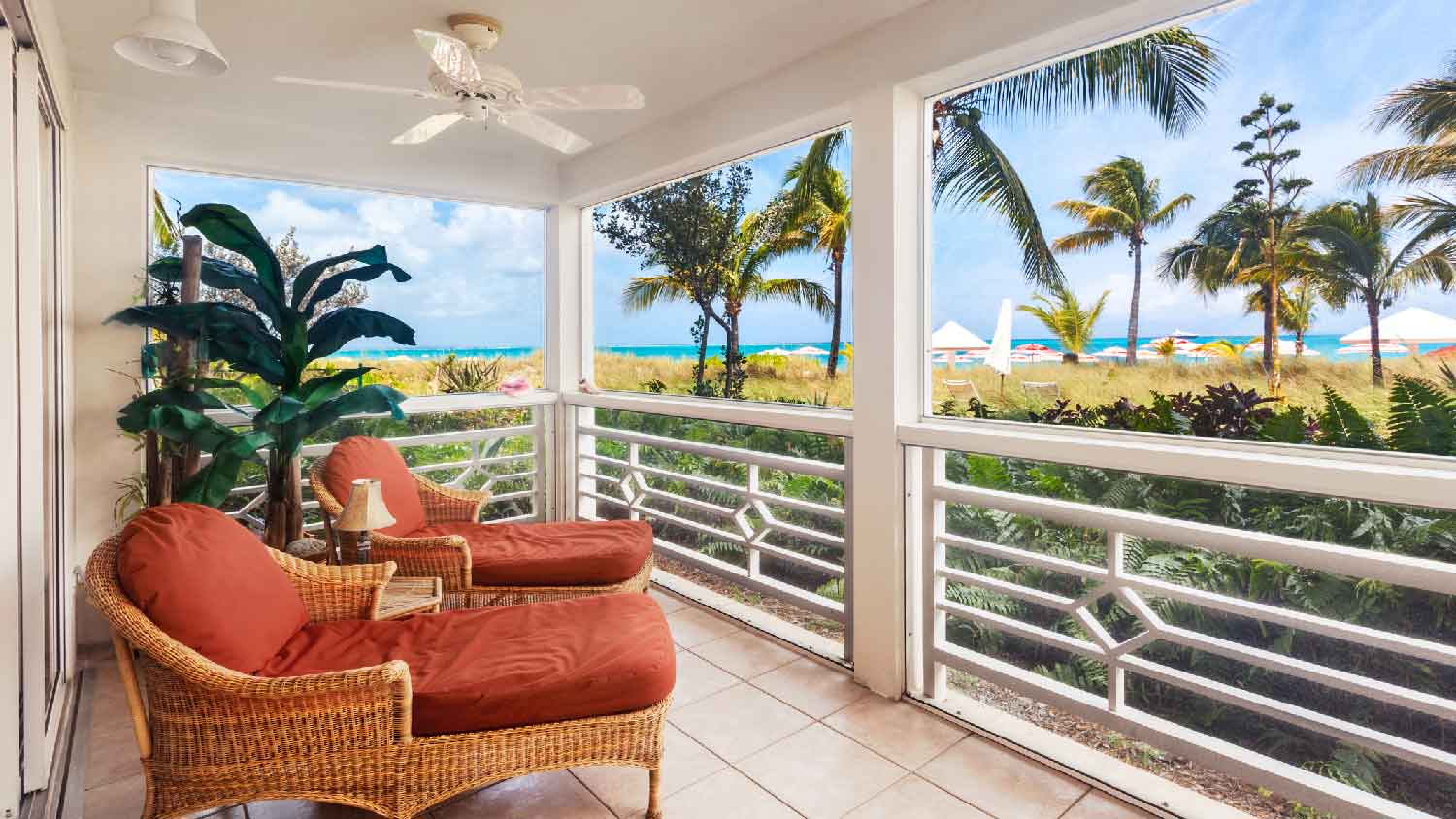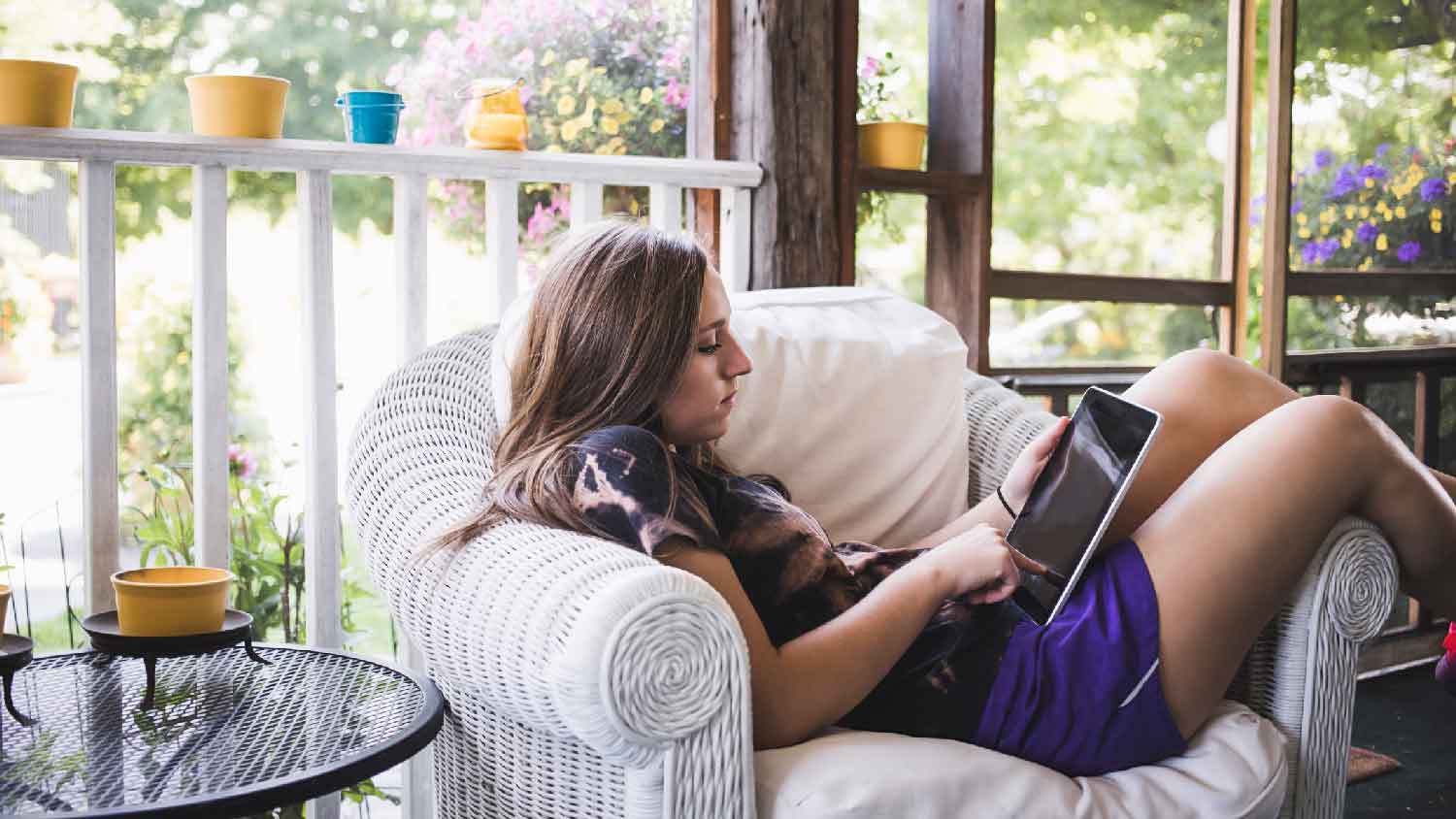
Considering adding a screened porch to your home? Discover the average cost of a screened-in porch, depending on its size, location, and more.
It’s the perfect season to compare these outdoor builds


3-season rooms are more versatile and can be used in every season except winter.
Screened-in porches have more exposure to the elements and experience more wear and tear.
A 3-season room requires less maintenance than a screened-in porch.
3-season rooms cost more on average than a screened-in porch.
Do you want to enjoy the great outdoors without actually being outdoors? A screened-in porch or 3-season room could be the answer. At first glance, these two sunny spaces may look similar, but there are some significant differences when it comes to price and usability. We’ll break down the differences, benefits, and costs of screened-in porches versus 3-season rooms.

The main difference between a screened-in porch and a 3-season room is versatility. A screened-in porch offers protection from the elements with a roof, but the screened walls provide an outdoor feeling inside. A 3-season room has the added benefit of glass windows to seal off the room in inclement weather.
A screened-in porch combines the comfort of being inside with the benefit of fresh air. It has an overhead roof and screened walls to keep bugs at bay. Depending on your climate and budget, different types of screens can meet various needs.
| Pros | Cons |
|---|---|
| Affordable | Not usable in extreme temperatures |
| Good for entertaining | Requires maintenance |
| Protection from the elements | Doesn’t add liveable square footage |
Best for:
Milder climates.
Homes with existing decks.
Homeowners seeking a low-cost entertainment space.
One of the benefits of a screened-in deck is that it provides outdoor entertaining space with protection from the elements, making it a compromise between staying inside and venturing outdoors.
Another perk is that screened-in porches are often less expensive than 3-season rooms. Building a screened-in porch costs $2,800 on average if you have an existing deck. However, if you need to build an entirely new porch structure, you’ll pay around $11,000, depending on the size.
Although a screened-in porch provides a roof over your head, the screen walls make the space seasonal. You most likely won’t want to spend time in it during very hot or cold weather.
Additionally, since the space is partially exposed to the elements, it’ll require more regular maintenance than an indoor room. For instance, you’ll need to regularly clean the screens and patch any holes.
Finally, a screened-in porch will add value to your home, but the feature doesn’t technically increase its livable square footage.

A 3-season sunroom has a roof and may be enclosed with glass instead of or in addition to screens. Some may feature windows that run from the floor to the ceiling, allowing you to view the outside.
As the name implies, a 3-season room, sometimes called a Florida room, can be enjoyed for three out of the four seasons. It’s not connected to your home’s HVAC system, so there’s no temperature control. If you live in a hot climate, you’ll likely spend time in a 3-season room during the fall, winter, and spring. If you live in a colder region, this type of sunroom will be most comfortable during the spring, summer, and fall.
| Pros | Cons |
|---|---|
| Usable three seasons of the year | No temperature control |
| Great for entertaining | More expensive |
| Multi-use space | Can’t be used all year |
Best for:
Homeowners looking for flexible entertaining space.
Homeowners with a bigger budget.
A 3-season room can transition between an indoor and outdoor space seamlessly, making it a flexible space to entertain, eat, or relax most of the year. You have the option of opening the windows to get the fresh-air benefits of a screened-in porch, but with more protection from the elements.
Adding a 3-season room can be expensive because of the cost of glass and window framing. Another drawback is that you can’t use these rooms year-round because they’re not temperature-controlled.

There are a few factors to consider when debating between a screened-in porch and a 3-season room. Here’s what to keep in mind when weighing the options.
While screened-in porches have a variety of screens to choose from, the additional build required for a 3-season room involves more opportunity to customize. Whether that’s the style of sliding windows or the installed electric throughout, there are more options to choose from when building a 3-season room.
The cost to enclose a porch with screens alone will be a fraction of the cost of a 3-season room. This is because screen paneling is far less expensive than floor-to-ceiling glass or adding a few glass windows.
Both screened-in porches and 3-season rooms require more maintenance than traditional rooms, but because the 3-season room can be sealed off, it’s more durable in the long run. When the season changes, you can protect the decor by closing the windows to avoid damage to furniture, walls, and flooring.
A screened-in porch is a simpler build than a 3-season room. If your home has an existing porch, adding screens is a manageable project for an advanced DIY-er—just be sure to find out if you need a permit for a screened-in porch. However, if you need to add a roof to an existing porch to create a screened-in porch, it’s best to call a pro. The same goes for building a 3-season room from scratch.
While neither a screened-in porch nor a 3-season room is connected to your home’s HVAC system, a 3-season room offers more temperature control due to its glass windows. A screened-in porch doesn’t provide any buffer from outdoor temperatures, but you can close or open the windows in a 3-season room to control air flow—and, to an extent, temperature.
A well-executed screened-in porch or 3-season room will add value to your property. However, a 3-season room will add more desirable square footage to the home since it’s more usable and features glass windows. This will likely boost your resale value more than a screened-in porch.
Also, a very important factor is placement. If your sunroom faces south it’ll get more sun but might need more cooling. If it faces west it can get hot in summer afternoons, despite AC.
Choosing between a screened-in porch and a 3-season room depends on your budget, construction timeline, willingness to maintain the space, and plans for its use. A sunroom contractor near you can advise you on the best option for your specific situation, whether that’s building a new 3-season room, adding a screened-in porch, or screening in an existing porch.
From average costs to expert advice, get all the answers you need to get your job done.

Considering adding a screened porch to your home? Discover the average cost of a screened-in porch, depending on its size, location, and more.

Homeowners can enclose their porches in a few different ways—each having their own price tag. Learn what contributes to the total cost to enclose a porch and how you can reduce the bill.

How much does it cost to rescreen your porch or sunroom? Learn about screen materials, average labor costs, and other costs for rescreening your porch.

From inflatable domes to self-built structures, DIY pool enclosures are a doable home project. Here's how to approach the project like a pro.

Need a year-round spot to see your gardening hobby flourish? Weigh whether a solarium or a greenhouse is the right choice for you.

Could your home use a little more light and space? Adding a sunroom may be the right move. Here's what you need to know.